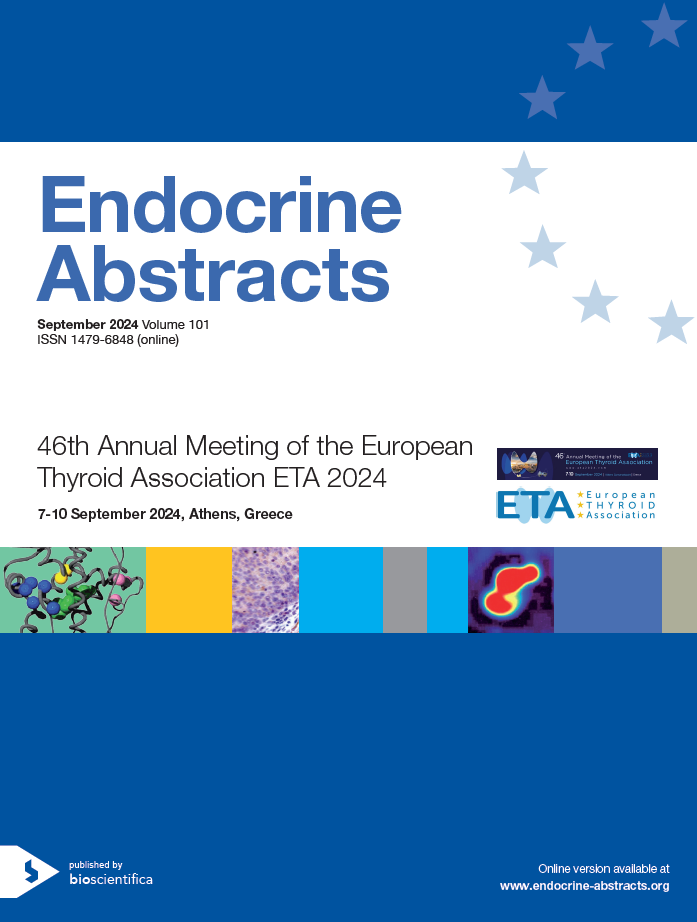
46th Annual Meeting of the European Thyroid Association (ETA) 2024
Poster Presentations
Hyperthyroidism
ea0101ps1-08-01 | Hyperthyroidism | ETA2024
Refractory case of amiodarone-induced thyrotoxicosis in a high cardiovascular risk patient
Margvelashvili Natia , Zavrashvili Nino , Chanturishvili Ketevan
ea0101ps1-08-02 | Hyperthyroidism | ETA2024
Prevalence of metabolic syndrome and its components in patients with controlled graves’ disease
Stoynova Mariya , Lilova Lora , Petrova Daniela , Yankova Inna , Dimitrova Inna , Shinkov Alexander , Kovatcheva Roussanka
ea0101ps1-08-03 | Hyperthyroidism | ETA2024
High frequency of mental fatigue after treatment of graves’ hyperthyroidism but low rate of sick-leave – report from a longitudinal cohort in sweden
Andersson Cathrin , Tammelin Karin , Lindo Agneta , Holmberg Mats , Filipsson Nystrom Helena
ea0101ps1-08-04 | Hyperthyroidism | ETA2024
Thymic hyperplasia is accurate to detect new onset graves’ hyperthyroidism and resolves after restoring euthyroidism
Bellastella Giuseppe , Scappaticcio Lorenzo , Di Martino Nicole , Ferrazzano Pamela , Caruso Paola , Ida Maiorino Maria , docimo giovanni , Trimboli Pierpaolo , Esposito Katherine
ea0101ps1-08-05 | Hyperthyroidism | ETA2024
Trab levels and thyroid volume in graves’ disease treated with block-replace therapy versus titration regimen
Stancu Ana-Maria , Stanescu Laura , Stancu Cristina , Badiu Corin
ea0101ps1-08-06 | Hyperthyroidism | ETA2024
Healthcare professionals’ experiences of caring for patients with gravés disease- an interview study
Lindo Agneta , Alsen Sara , Fors Andreas , Filipsson Nystrom Helena
ea0101ps1-08-07 | Hyperthyroidism | ETA2024
Quality of life in graves disease: does type of treatment matter?
Perini Nicolas , Carlini Juliana , Santos Roberto , Romaldini Joao , Villagelin Danilo
ea0101ps1-08-08 | Hyperthyroidism | ETA2024
Contrast-enhanced ultrasound (CEUS) in hyperthyroid diffuse diseases
ea0101ps1-08-09 | Hyperthyroidism | ETA2024
Quality of life after thyroidectomy for benign thyroid disease
Veneti Stavroula , Mintziori Gesthimani , Kotsovolis George , Pliakos Ioannis , Chorti Aggeliki , Goulis Dimitrios , Papavramidis Theodossios



